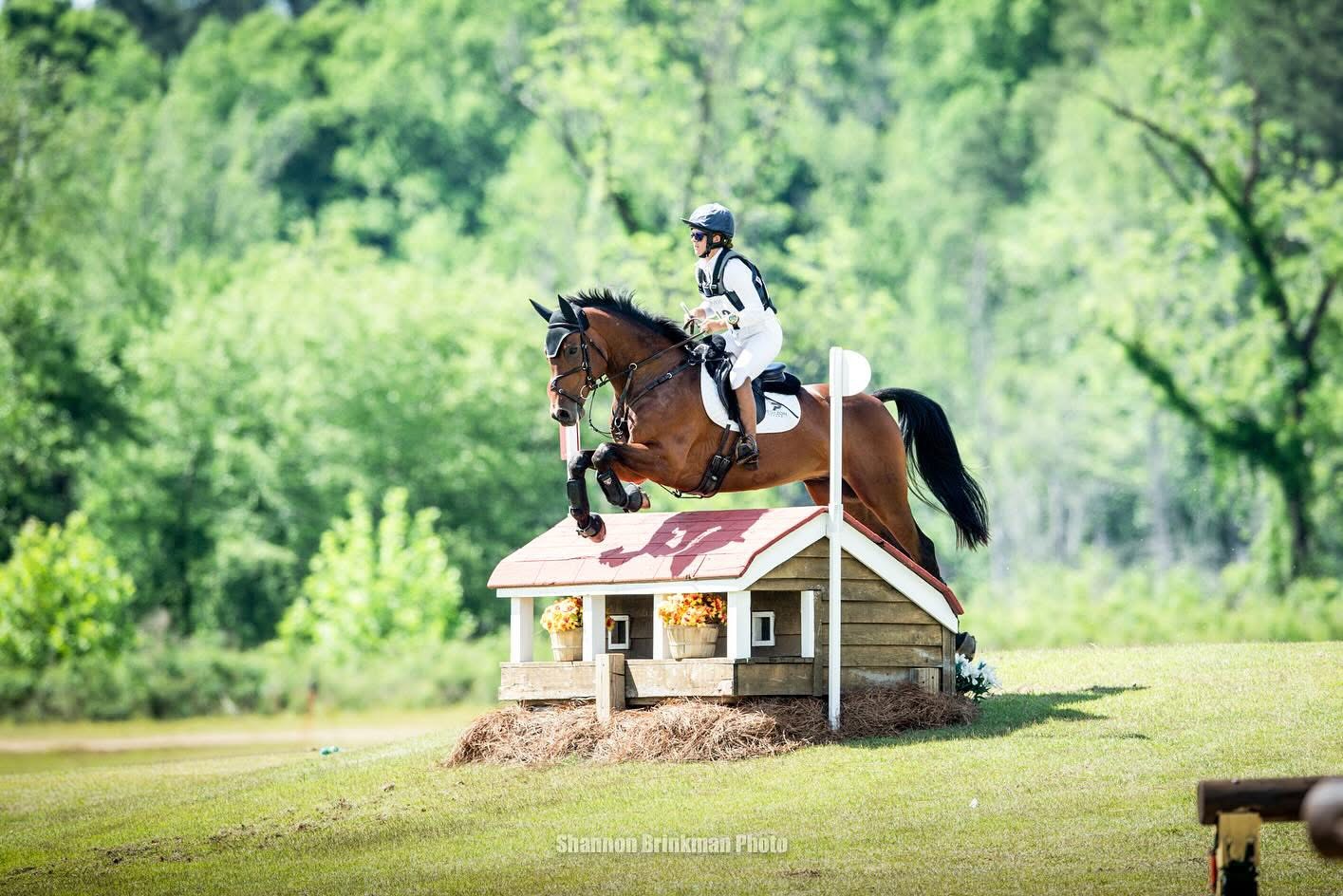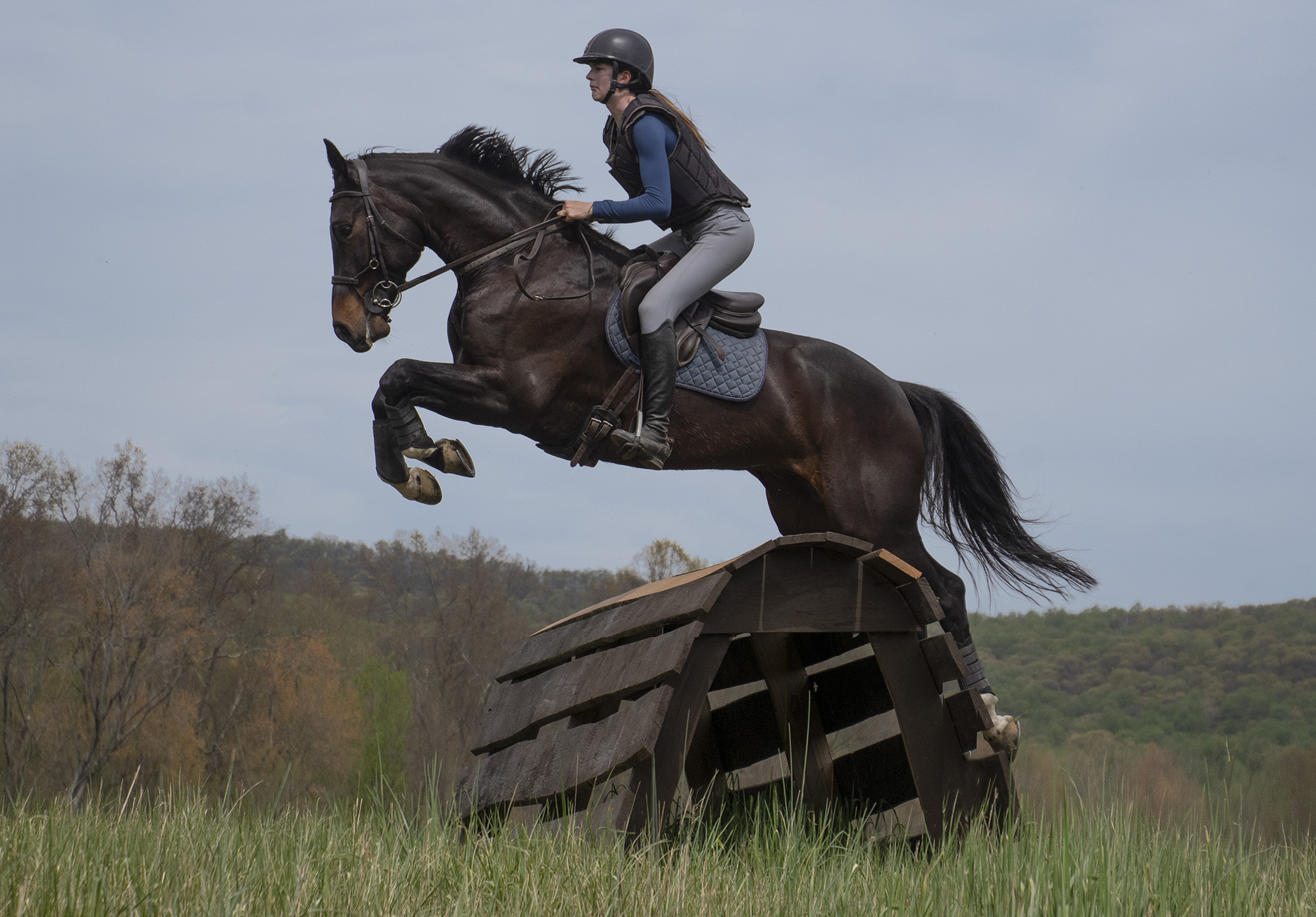
Carousel Park in January. Photo by Holly Covey.
Recently, in mid-winter quiet, on a closed cross country course that still had all the jumps in place, I was able to take a stroll around a couple of the fields. As I walked, I was thinking, “What a luxury this is, to be able to walk the strides of the turning questions, to look for the lines here and there, to be able to take my time — and not worry about a horse on the trailer or getting back in time to dress for dressage!”
And suddenly it hit me: this course, as a public park, had the jumps available for walking because they weren’t put away for the winter like many other portable jump courses. So getting to walk the Novice and Training level courses was truly an extraordinary learning opportunity, because most competition courses aren’t available any more for any length of time.

Turning question on top of a hill. Photo by Holly Covey.
Years ago when most jumps on a course were not portable, fences and obstacles were built in, solidly placed in fields and woods, and lived there for a time — because someone took a week to dig them in and put them there, they weren’t going to dig them out and move them anytime soon. Courses were available for looking at all the time, or at least the more massive built-in features were almost part of the landscape at many places.
Today, think of this: our learning opportunities to walk courses are shrinking before our eyes. How many times do you walk a Beginner Novice, Novice, Training course at your local favorite horse trial? Given the time frame of most one-day horse trials, you are indeed fortunate to be able to walk one course twice at most. Does that sound familiar?
When the courses are set, they have a deadline at most events of 3 p.m. on Friday, for competition scheduled for say, Saturday and Sunday. So your fully decorated, completely-ready cross country course will be available for you from 3 p.m. on Friday to when you actually get to ride it, then when you are done, the competition is over, it might be available for a few minutes to a few days to walk — and then here comes the tractor and away it goes for another year. That’s barely 48 to 60 hours that courses will stay up to be viewed.

Permanent jumps that stay forever on courses. The foundation at Plantation, one of the few permanent obstacles we see today. Photo by Holly Covey
Years ago you could walk courses for weeks before and after events, so this new trend in the last couple of decades to the portable cross country jump has indeed cut into the educational aspect of this phase of our sport. If you only have literally hours to examine a course, to walk it nuances, to see its questions, to check footing before and after jumps, to get your lines straight, to know the ground and the paths — good grief, no wonder we see the unsure riding and unfamiliarity that we see on occasion on cross country phases everywhere. Of course every course is different and does change all the time, but the increasing use of portable, movable jumps makes courses disappear much quicker than they used to.
I know few people today, who compete at the lower levels, that have the time to walk more than their own course. Years ago we used to walk all the courses, or at least the one above ours, so we’d know what was being asked and could go home and practice or work on the next level up. When was the last time you took the time at an event to walk not only your own course but one or two other courses? I thought so. Me too!
At Fair Hill International, the course takes months to build and set, with the final touches being finished the week prior to the Saturday cross country day. As a volunteer helping with decorating, our professional course decorator, Janine McClain, works us all against the Ground Jury’s official walking day of usually Tuesday. Final touches are made and the course is available for walking officially Wednesday. Riders can look at it for two more days until they ride Saturday. On Saturday, immediately following the last horse on course we begin tearing it down very quickly — by Sunday morning it is nearly all gone!

In the field one day — gone the next. Fair Hill 2018 photo by Holly Covey
So as I walked on the dreary winter day in the park, checking the strides and noticing how the designer had set the jumps uphill and downhill, I was thinking, it’s been a while since I just walked a course to learn it, to see what was there — why is that? And I remembered the timeline at Fair Hill, and suddenly it was clear: we rush riders too much at horse trials when it comes to learning cross country. We don’t spend enough time walking and learning out in our fields and trails and paths and roads, we don’t get to think about jumps and how they are set very much before they dismantle everything and cart them away.
So the answer that came to me is this. I will make an effort this year to do my due diligence as an event rider, and walk more than my own course at the events I choose to compete. That means I will need to plan my time more carefully at the event and it may mean making some changes. I’ll need to be fit enough to walk more than one course; I may need to bring a groom along to care for the horses while I’m out there; I will definitely need to plan a time schedule carefully; and possibly travel earlier, stay later, and squeeze in more course walking in an effort to continue my own education on cross country riding. I’m pledging to include course walking as a critical part of my riding in this sport, into my entire plan for the year. Are you, too? I hope so!






































